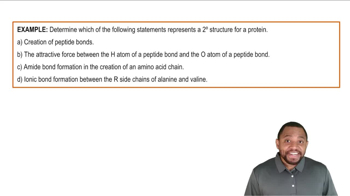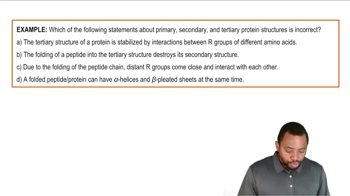Bradykinin, a peptide that helps to regulate blood pressure, has the primary structure Arg-Pro-Pro-Gly-Phe-Ser-Pro-Phe-Arg.
b. Bradykinin has a very kinked secondary structure. Why?
 Verified step by step guidance
Verified step by step guidance Verified video answer for a similar problem:
Verified video answer for a similar problem:



 1:5m
1:5mMaster Secondary Protein Structure Concept 1 with a bite sized video explanation from Jules
Start learning